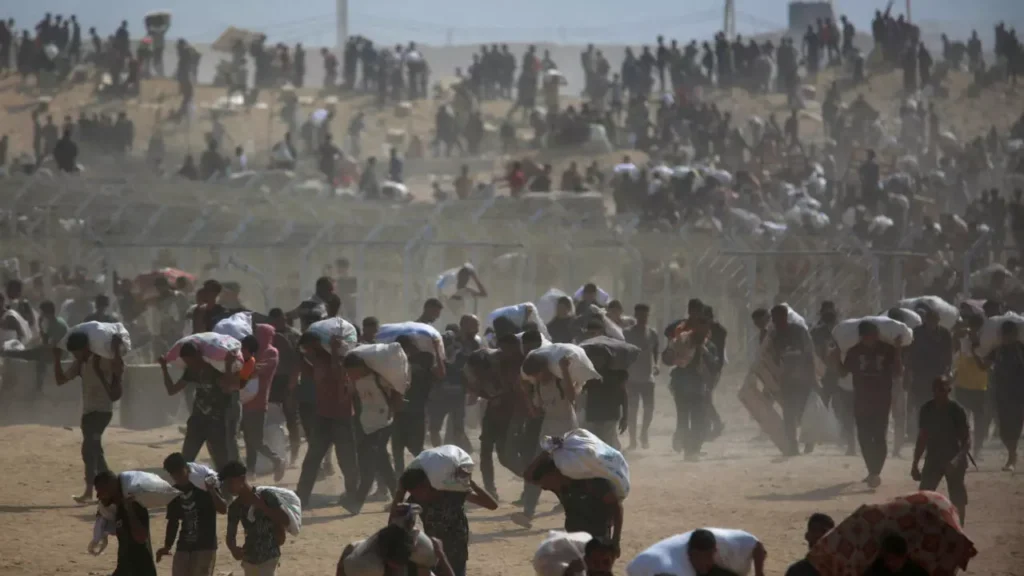Israel announced on Tuesday that it will begin allowing commercial goods to enter Gaza Strip gradually through selected local traders, under strict monitoring.
This move aims to increase the flow of aid into Gaza while reducing reliance on the United Nations and international organizations.
Will This New Mechanism Help in Aid Delivery to the People in Gaza?
According to the Israeli Coordination of Government Activities in the Territories (COGAT), the plan will:
- Permit limited commercial imports into Gaza
- Select a small group of approved local traders
- Enforce strict security and regulatory standards
COGAT stated, “The goal is to expand humanitarian aid entering Gaza while decreasing dependence on international aid agencies.”
Rising Hunger Crisis in Gaza
Humanitarian agencies have warned of a growing famine risk.
On Monday, Gaza’s Health Ministry reported that five people died from hunger or malnutrition in just 24 hours.
Since the start of the war, 180 people—including 93 children—have died due to starvation, according to local health officials.
UN agencies say air-dropped food aid is not enough, urging Israel to open more land routes and speed up access to supplies.

Aid Delivery Stats and Challenges
Last week, over 23,000 tons of humanitarian aid entered Gaza via 1,200 trucks, according to COGAT. However, hundreds of trucks remain undelivered to distribution centers due to logistical delays by international organizations.
Palestinian and UN officials emphasize that Gaza needs around 600 aid trucks daily to meet basic humanitarian needs—a level of access that was allowed before the conflict began.
A Risky Shift Toward Local Traders
Israel’s decision to allow goods into Gaza through local traders may appear to ease humanitarian pressure, but it raises serious concerns.
With limited oversight and high demand, these traders could set inflated prices, making basic necessities unaffordable for many.
Instead of reducing suffering, this shift risks deepening the crisis—potentially increasing starvation among Gaza’s most vulnerable communities.


